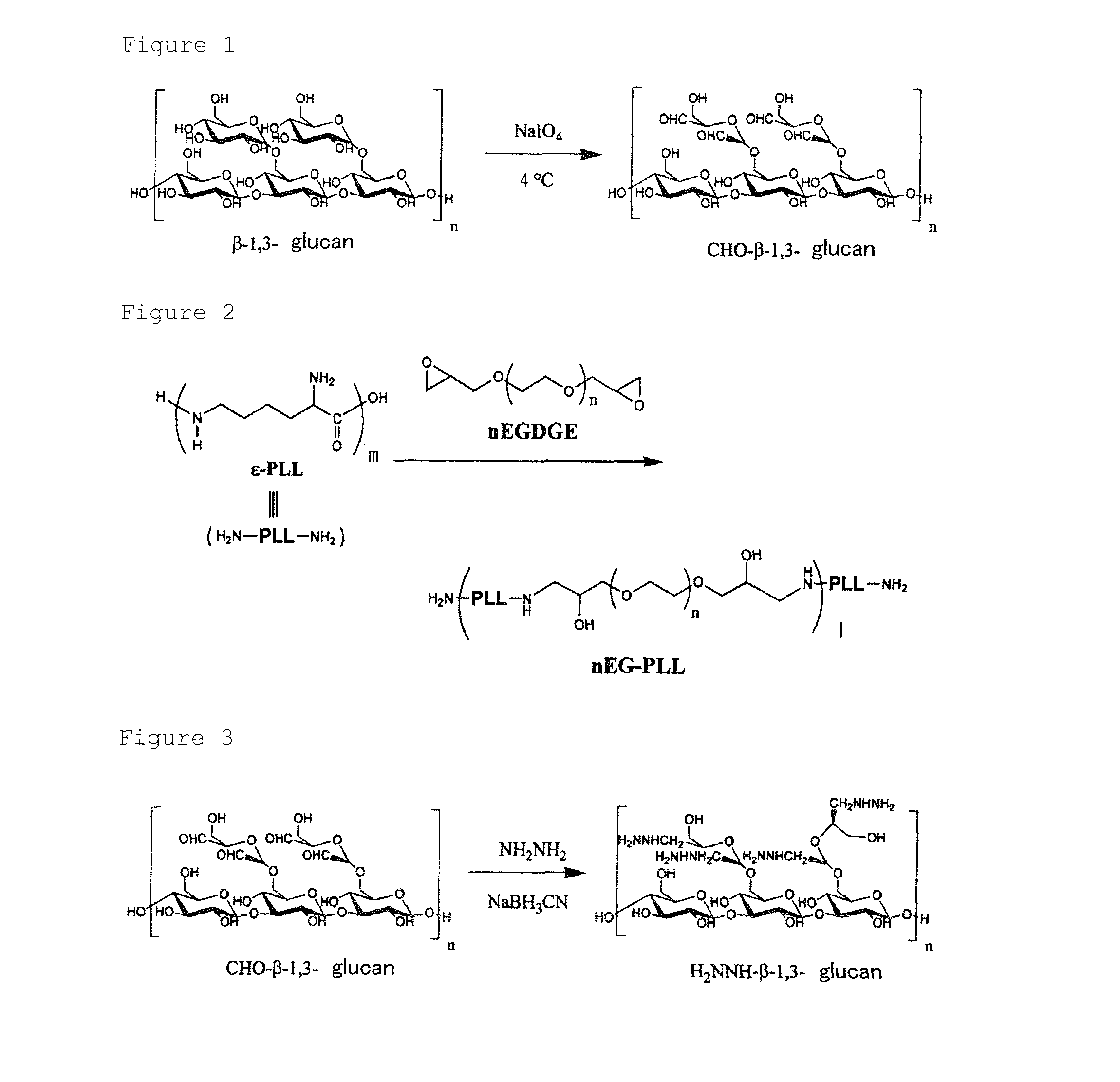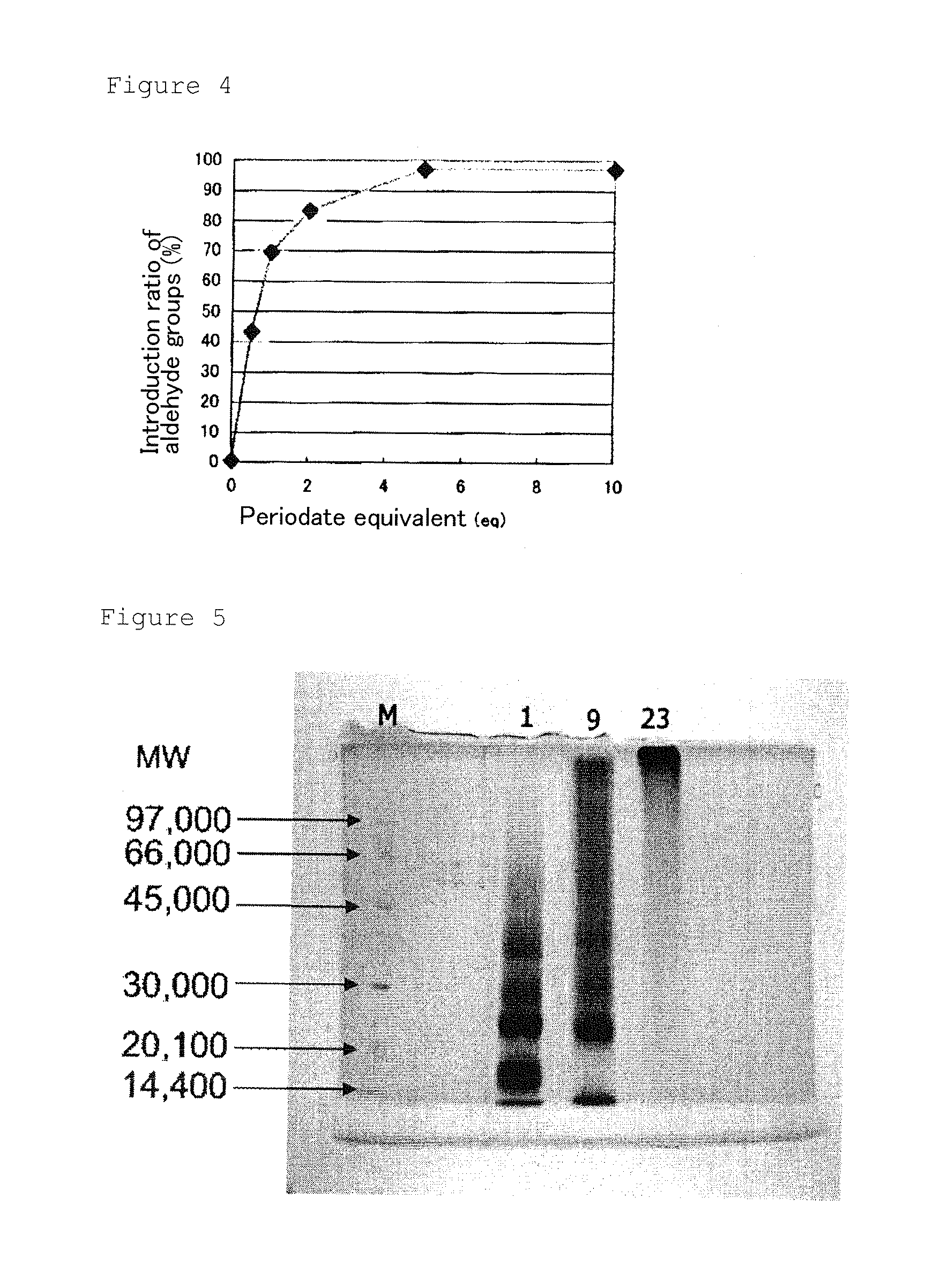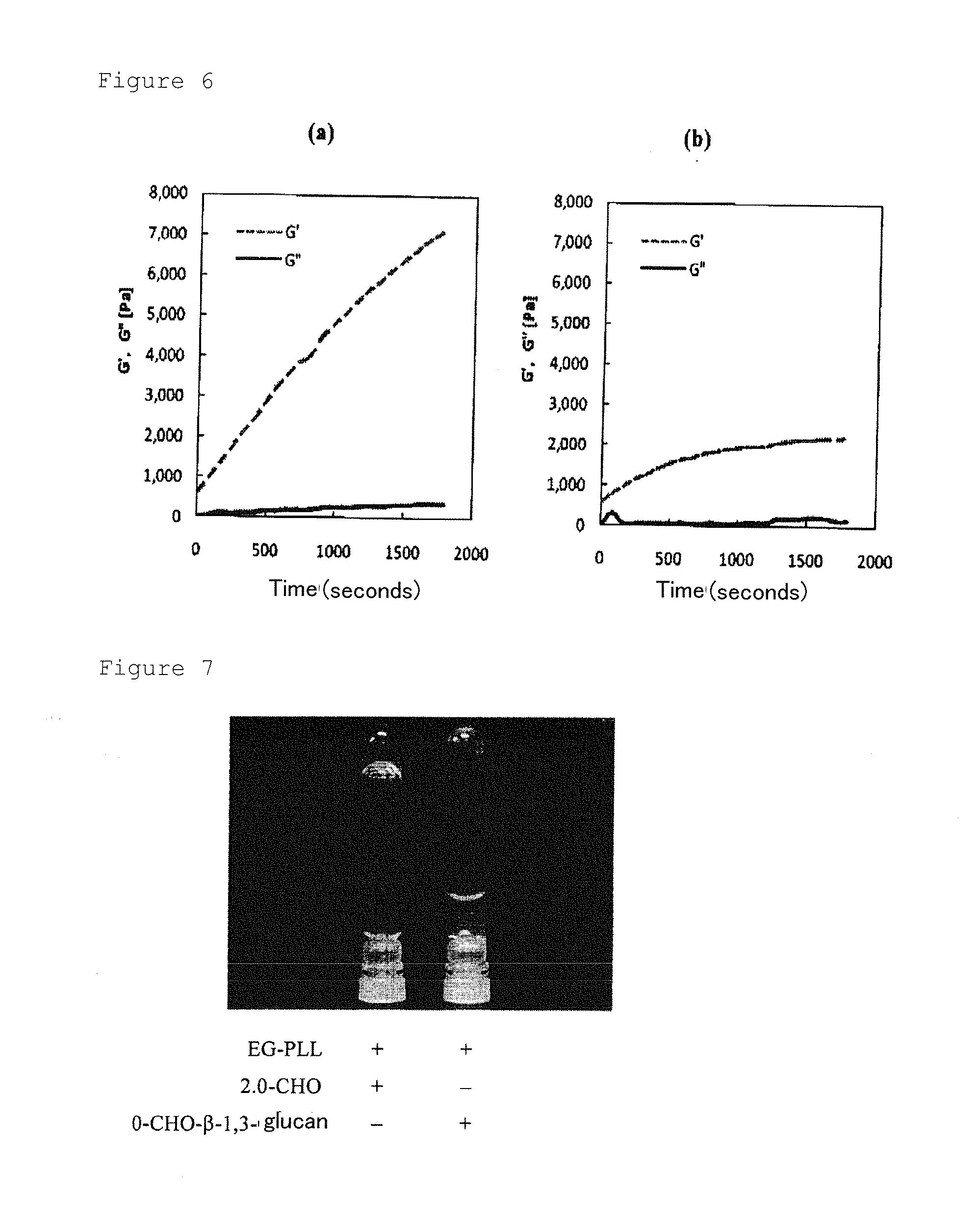Β-1,3-glucan-derived polyaldehyde/polyamine hydrogel
a polyaldehyde and polyamine technology, applied in the direction of surgical adhesives, powder delivery, drug compositions, etc., to achieve the effects of high biocompatibility, good gelation kinetics and gel strength, and high biocompatibility
- Summary
- Abstract
- Description
- Claims
- Application Information
AI Technical Summary
Benefits of technology
Problems solved by technology
Method used
Image
Examples
examples
The Preparation of the Polyaldehyde from β-1,3-Glucan
[0083]Aldehyde groups were introduced into branched glucoses in β-1,3-glucan according to the synthesis scheme shown in FIG. 1, Specifically, 100 mg of β-1,3-glucan (DAISO, AQUA β powder) having branched glucoses was dissolved in 5 ml of water by stirring at room temperature. To this solution, various molar equivalents of meta-sodium periodate in relation to the mol concentration of the branched glucoses in β-1,3-glucan were added as shown in Table 1 and the solution was subjected to the reaction at 4° C. for 24 hours. To the solution, 10 ml of water was added and small molecules contained in the solution were removed by dialysis (Spectra / Por®7, MWCO 3,500). After the dialysis, the solution was concentrated by means of an evaporater to give an aqueous solution of polyaldehyde derivative. A portion of the solution was lyophilized in order to determine the weight concentration of the solution. After the concentration, the solution w...
PUM
| Property | Measurement | Unit |
|---|---|---|
| molar ratio | aaaaa | aaaaa |
| temperature | aaaaa | aaaaa |
| temperature | aaaaa | aaaaa |
Abstract
Description
Claims
Application Information
 Login to View More
Login to View More - R&D
- Intellectual Property
- Life Sciences
- Materials
- Tech Scout
- Unparalleled Data Quality
- Higher Quality Content
- 60% Fewer Hallucinations
Browse by: Latest US Patents, China's latest patents, Technical Efficacy Thesaurus, Application Domain, Technology Topic, Popular Technical Reports.
© 2025 PatSnap. All rights reserved.Legal|Privacy policy|Modern Slavery Act Transparency Statement|Sitemap|About US| Contact US: help@patsnap.com



